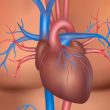01- New Valvular Heart Disease Guidelines with Key TAVI and Mitral Regurgitation Updates Valvular heart disease management guidelines were updated last week by the AHA and the ACC. Read more HERE 02- High Risk Anatomy Challenges ISCHEMIA Outcomes According to this recent analysis published in JAHA, patients with stable Ischemic heart disease and high-risk anatomy benefit from revascularization...
Current DES Performance: Is There Room for Improvement?
Head-to-head comparison of current drug-eluting stents (DES) showed contradictory results that led us to believe, for years, that we had reached a plateau. This feeling was also fostered by the disappointment caused by Absorb and bioresorbable-polymer stents. However, this recent article featured in JACC Interventions shows a light at the end of the tunnel with...
Latest News on AHA/ACC Primary Prevention Guidelines
Most cardiovascular diseases and mortality come down to 4 years of unhealthy habits (smoking, poor diet, obesity and sedentarism) and 3 major risk factors (cholesterol, hypertension, and diabetes). Ideal cardiovascular health, defined as absence or control of these 7 factors, is far less frequent than we might believe. It is estimated that 87% of the...
Diabetes and Peripheral Vascular Disease: Old Drugs, New Evidence
This paper, recently published in JAHA, showed that patients with type 2 diabetes mellitus exhibiting lower-limb vascular disease benefit from combining cilostazol and clopidogrel. Treatment for at least 6 months with clopidogrel (75 mg/QD) plus cilostazol (100 mg/BID) significantly reduces ischemic events—including stroke, infarction, and death from vascular causes—compared with clopidogrel monotherapy. Adding cilostazol reduces ischemic events, but that...
SOLACI PERIPHERAL | 4th Clinical Case: Thoracic Aortic Dissection in Patient with Complex Arch
A new clinical case to keep learning with colleagues! Today, we present a Thoracic Aortic Dissection in Patient with Complex Arch. This is the 4th case for SOLACI Peripheral, which continues its mission: to deepen knowledge exchange among Latin American interventional cardiologists. Tell us what you think about this case using the comments section in this...
Procedural Rescheduling Criteria in the Pandemic Era
Patients with structural heart disease are at higher risk in the face of the new coronavirus infection due to both advanced age and numerous comorbidities. All variables must be taken into account when deciding whether a patient can wait (so as to minimize the risk of exposure to the virus) or their pathology must be...
The Most Read Scientific Articles of March
01- Coronavirus and the Heart: How Should Cardiologists Prepare? As the number of confirmed cases increases throughout the globe, a picture is emerging as to what the direct cardiovascular effects of this pandemic may be. Read more HERE 02- TAVR: Should Transradial Approach be the Second Access Site? Courtesy of Dr. Carlos Fava. One of...
Virtual ACC 2020 | COAPT: Better Quality of Life Translates into Harder End-Points
After transcatheter mitral valve repair with MitraClip, the COAPT patients saw improved quality of life, better survival rate and fewer hospitalizations for cardiac failure at long term follow-up. Improved quality of life had already been presented, exactly one year ago at the ACC 2019. In that occasion, it was established that the MitraClip reduces symptoms...
Treating Both Atrial Valves Improves Survival
Courtesy of Dr. Carlos Fava. There a few treatment options for tricuspid valve disease. It is practically limited to diuretics and surgery, is associated to high mortality and, generally, mitral regurgitation. Developing the “edge-to-edge” strategy with MitraClip has been shown beneficial and, at present, there are studies that claim this technique could be greatly beneficial...
The Most Read Articles of December in solaci.org
1- Consensus on How to Conduct Follow-Up in Peripheral Vascular Disease Peripheral vascular disease involves multiple areas and, therefore, can have very different presentations (from complete lack of symptoms to disabling symptoms). Depending on clinical presentation, general condition, anatomical localization, and lesion extension, revascularization can be indicated alongside optimal medical treatment. Read also HERE 2-...









